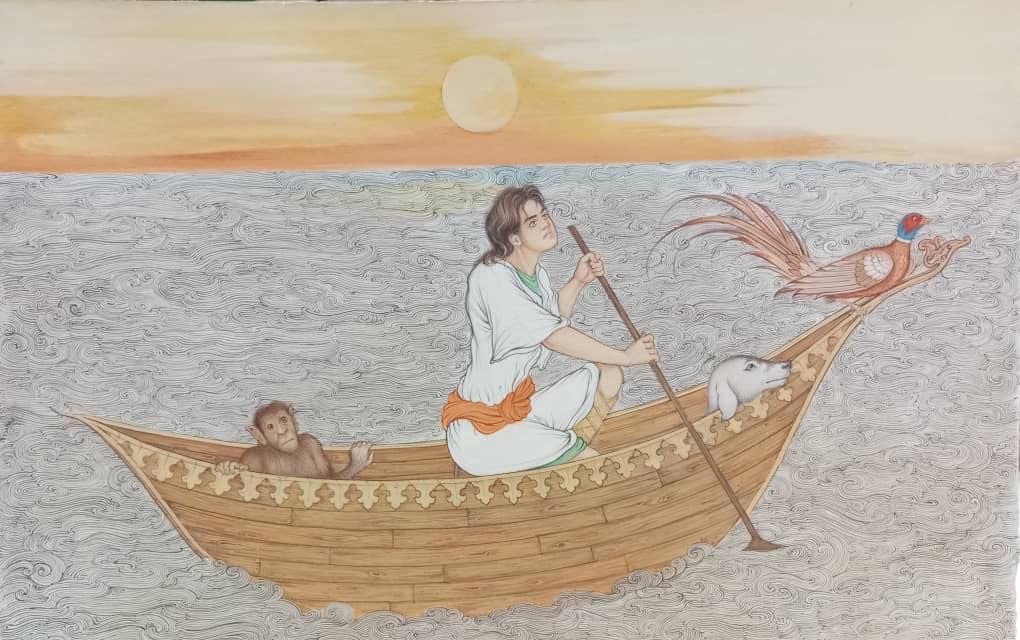Purpose
- To position the decline of culture as a "social problem" not only in Japan but also in the world and to create a climate where society can cherish culture.
- Organize the current situation of the traditional craft industry, which faces various problems such as training of successors, shortage of materials, difficulty in procurement of tools, etc.
- Aim to realize a sustainable traditional craft industry.
Background
According to a statistical survey by the Association for the Promotion of Traditional Craft Industries, the production value of traditional Japanese crafts shrank by 80% between 1983 and 2015.
Specific issues include (1) succession problems, (2) raw material shortages, and (3) difficulty in procuring tools.
(1) Succession Issues
In recent years, the number of craftspeople in traditional crafts has decreased significantly due to the need for more successors.
According to statistical information from the Association for the Promotion of Traditional Craft Industries, the number of people engaged in traditional crafts in Japan peaked in 1983 and decreased to 1/5 as of 2015. An increasing number of craftspeople are pessimistic about the uncertain future and do not train their successors.

(2) Insufficient raw materials
Various raw materials are needed to make traditional crafts. Recently, procurement of materials has become more difficult due to declining demand.
Examples include Gofun (shell white powder), used to whitewash the faces of Japanese dolls, sumac nuts used to make Japanese candles and human hair used to make wigs.
In addition, metals and wood have become difficult to procure due to recent price hikes, although the materials are abundant.
(3) Tools
Traditional craftspeople often order small knives and brushes in quantities of a few pieces. Still, they are often turned down for small lots (small order quantities), so they make their own or get them from other companies in the same trade that have closed.
In addition, there are often no companies left that can repair sewing machines and machinery when they break down. When we talk to craftspeople, we hear that they have been using one small knife carefully for decades or are using machines over 100 years old.
Please click here for more information on traditional craft tools and raw materials.
Details
Culpedia visits craftsmen, unions, and dealers engaged in traditional craft production, mainly in Kyoto, and interviews them about the situation on the three axes of "craftsmen," "raw materials," and "tools," and compiles them into a document.
We also conduct surveys overseas, as traditional culture is in jeopardy and more comprehensive than in Japan.
Our goal is to realize a sustainable traditional craft industry.
Cross-Border Cultural Exchange

Purpose
Crossing borders between Japanese and foreign cultures fosters a sense of kinship that transcends national borders.
Background
Traditional cultures shape people's identities and create connections between people.
Mutual exchange across borders is significant in times of global instability, such as fostering a sense of kinship that transcends national borders in human society and ultimately contributes to world peace.
Details
Momotaro Project
The Momotaro Project is a project to translate the Japanese folktale Momotaro into English, Indonesian, and Persian and to have traditional painters from the three countries draw illustrations.
Momotaro is said to have originated in the "Hogen Monogatari" of the Kamakura period (1185-1333), followed by the Muromachi and Edo periods (1333-1568). Still, there is also a theory that the story originated overseas, with parallels in ancient Greece, ancient India, China, and the Korean peninsula.
We started this project in July 2022 with the idea that if Momotaro, a story known to everyone in Japan, were painted by foreign artists who had no background knowledge of the story, we could create a variety of Momotaro that would reflect the character and regional characteristics of each country.
At the launch, we had no contact with traditional painters. Still, with the support of various people, all the paintings were completed one year later, in July 2023.
For this exhibition, we focused on the theme of Momotaro. This traditional Japanese fairy tale also has international connections. It aims to create a place where people can exchange their hearts and minds through the creation of paintings in which the story of one country is told in accordance with the traditions of another.
For more information, please see this page.
Momotaro Wayang
Momotaro Project in Indonesia" will be held in Yogyakarta, Indonesia, in December 2023.
While the Momotaro Project in Japan, held in the same month in Japan, depicted Momotaro using traditional painting techniques of Bali, Indonesia, the Momotaro Project in Indonesia will perform Momotaro using wayang (shadow puppet theater), a conventional Indonesian performing art.
For details, please see this page.

